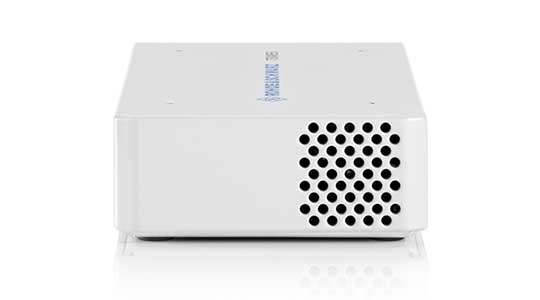To further exploit the huge potential of 5G, the wireless industry has continued to develop the standard up to Release 16, and development continues. But technology does not stand still, and even as 5G presses forward, a new generation of cellular technology is emerging. Cutting-edge 6G research is already underway at communications equipment manufacturers and research institutions, and reconfigurable intelligent surfaces (RIS) is a major area of interest in 6G research. Rohde & Schwarz, with Tsinghua University and Actenna Technology, recently completed an evaluation and trial of RIS technology to comprehensively evaluate the effects and performance of RIS deployment.
RIS can be programmed to modulate the phase of electromagnetic waves and reflect signals into blind spots, enhancing coverage and improving user experience. The low cost, low energy consumption and easy deployment, of RIS have attracted broad interest in 6G research and made it a popular candidate technology. The technical trial mainly evaluated the deployment effects and performance of sub6 GHz RIS and mmWave RIS in different indoor and outdoor scenarios. The tests modelled deployment conditions with and without RIS, different incidence and reflection angles, different deployment distances, etc. Recorded performance index parameters included RSRP, throughput and others. The trial participants complemented each other’s strengths and worked together to carry out several RIS test projects yielding hard data that makes a strong argument in favor of continued RIS technology development.
The RIS verification environment was divided into indoor testing and outdoor testing, with RIS test subjects and instruments mainly used in the indoor test. The test subjects used products from professional RIS equipment supplier Actenna Technology, including an 860mm x 860mm sub6 GHz RIS array consisting of 20 x 20 array elements and a 180mm x 180mm mmWave RIS array consisting of 32 x 32 array elements. The test instruments included the R&S SMW200A vector signal generator for transmitting standard 5G reference test signals in different frequency bands and the R&S TSME6 drive test scanner for measuring RSRP and other parameters. By varying the test conditions, the testers verified the RIS supersurface performance metrics to meet design expectations under different conditions.
The outdoor test used a real network environment, either a sub6 GHz or mmWave network. RSRP and throughput were tested using QualiPoc software and drive test terminals. An R&S TSME6 scanner was used to verify that RIS can solve problems like blind spot coverage in a real network environment.
In addition, the outdoor test also verified the performance of the RIS supersurface in a chamber environment, using the R&S SMW200A vector signal generator as a signal source and the R&S FSW43 signal and spectrum analyzer to test the antenna directional map and the adjacent channel leakage ratio (ACLR).
The joint tests provided a comprehensive understanding of RIS functions and performance indicators for all of the parties involved, and offer a reference for future design directions. In the future, Rohde & Schwarz will continue to study RIS technology in depth with its partners, organize and participate in more tests and take part in standardization work, so as to make a solid case for RIS development.
For more information, visit: www.press.rohde-schwarz.com.












